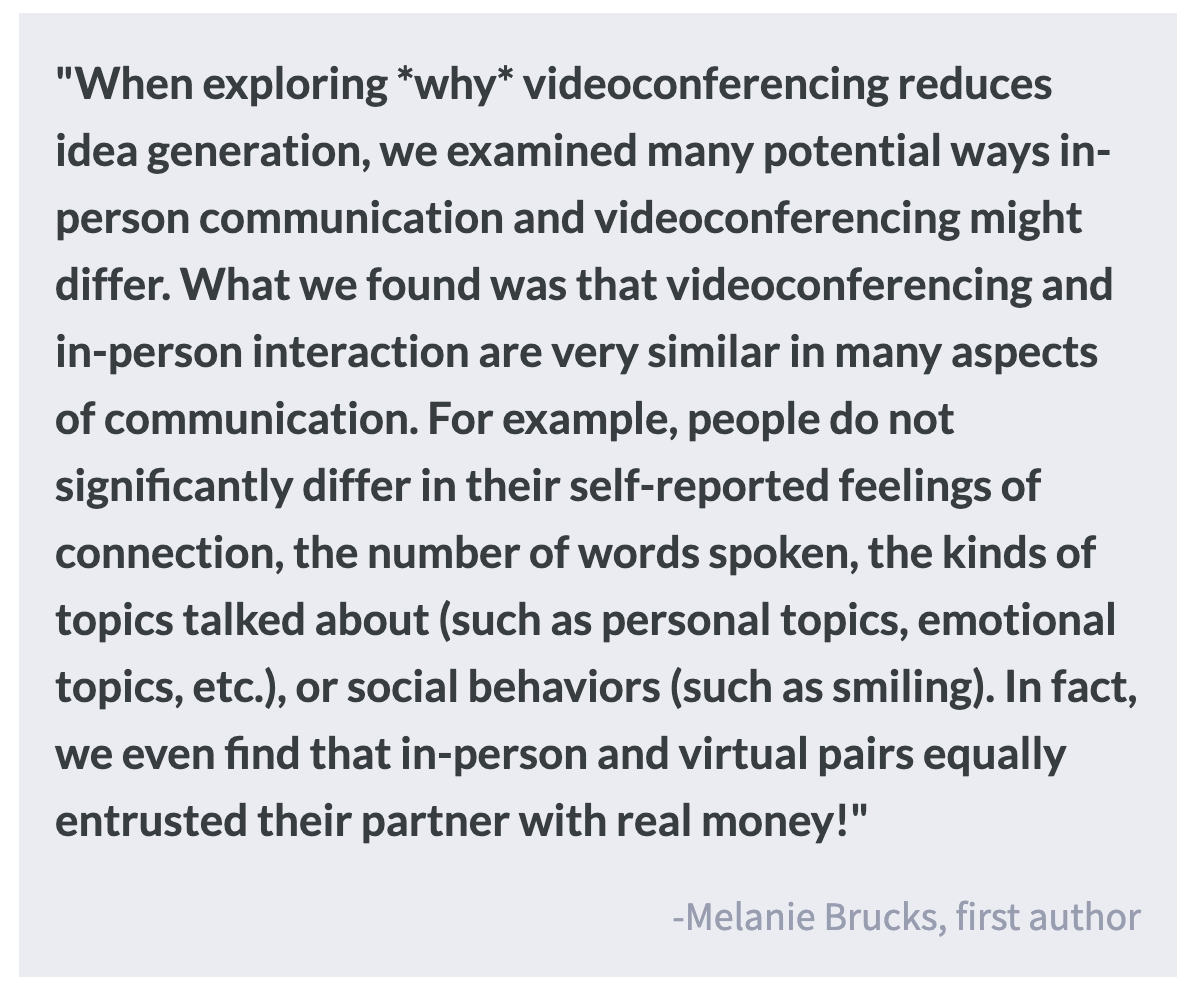The Impact of Online Communication at Work on Creativit
Post by Megan McCullough
The takeaway
Videoconferencing as a means of communication inhibits the production of creative ideas. This is because the narrow visual field of those using a digital screen correlates with a narrower cognitive focus.
What's the science?
As a result of the COVID-19 pandemic, there has been a switch to full-time or hybrid remote employment. This shift is projected to outlast the pandemic, with 20% of all U.S workdays estimated to take place remotely even after the pandemic ends. Because of the impact of collaboration on workplace productivity, recent studies have examined the effect of working remotely on the quality and quantity of creative ideas. This week in Nature, Brucks and Levav examined the impact of the physical difference between remote and in-person work on generating and selecting creative ideas.
How did they do it?
The authors conducted two separate studies to examine the productivity differences between online and in-person collaboration. The first study took place in a laboratory setting. The authors randomly paired 602 college undergraduates and randomly assigned them to a virtual or an in-person condition. All pairs were tasked with generating alternative uses for a product and then selecting their most creative task. The authors recorded the number of ideas each pair generated and assigned creativity scores to each idea to measure the decision-making skills of each pair. To test the hypothesis that any differences in creativity between the two groups is due to the effect of screens on narrowing the visual scope of the user, the authors measured the ability of participants to recall props placed around the room and recorded eye gaze during the task.
The second study involved 1,490 engineers in a realistic work setting. It was conducted to extend the findings of the laboratory study to a more realistic environment. These participants were randomly paired and assigned to one of the two groups. Then they were asked to generate product ideas and select one to submit to their company. As in the first experiment, the authors recorded the number of ideas each pair generated and assigned creativity scores to each idea.
What did they find?
In both the laboratory and field experiments, the authors found that pairs in the virtual groups generated fewer total ideas and fewer creative ideas. There was no statistically significant impact of condition on the ability to select an idea. One hypothesis as to why the difference occurs is that narrowing one’s visual focus to a screen also narrows cognitive focus. The data supported this hypothesis: virtual pairs spent more time looking at their partners and less time looking around the room. The ability to recall the props placed around the room and increased gaze around the room were correlated with an increase in creative ideas.
What's the impact?
This study found that there are differences in the generation of creative ideas between colleagues who collaborate in person compared to those who collaborate through videoconferencing. Videoconferencing groups were less effective at generating creative ideas than their in-person counterparts. This research suggests that there is an advantage to in-person work when it comes to creativity and idea generation. As companies move forward in developing remote work policies after the pandemic, this area of research will become important in the formation of those policies.


